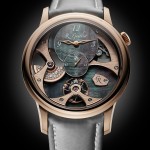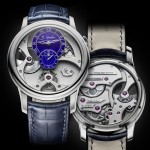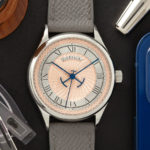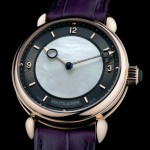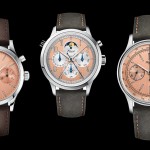Insight: Marco Lang Introduces the Zweigesicht-1
Impressive quality and novel features explained.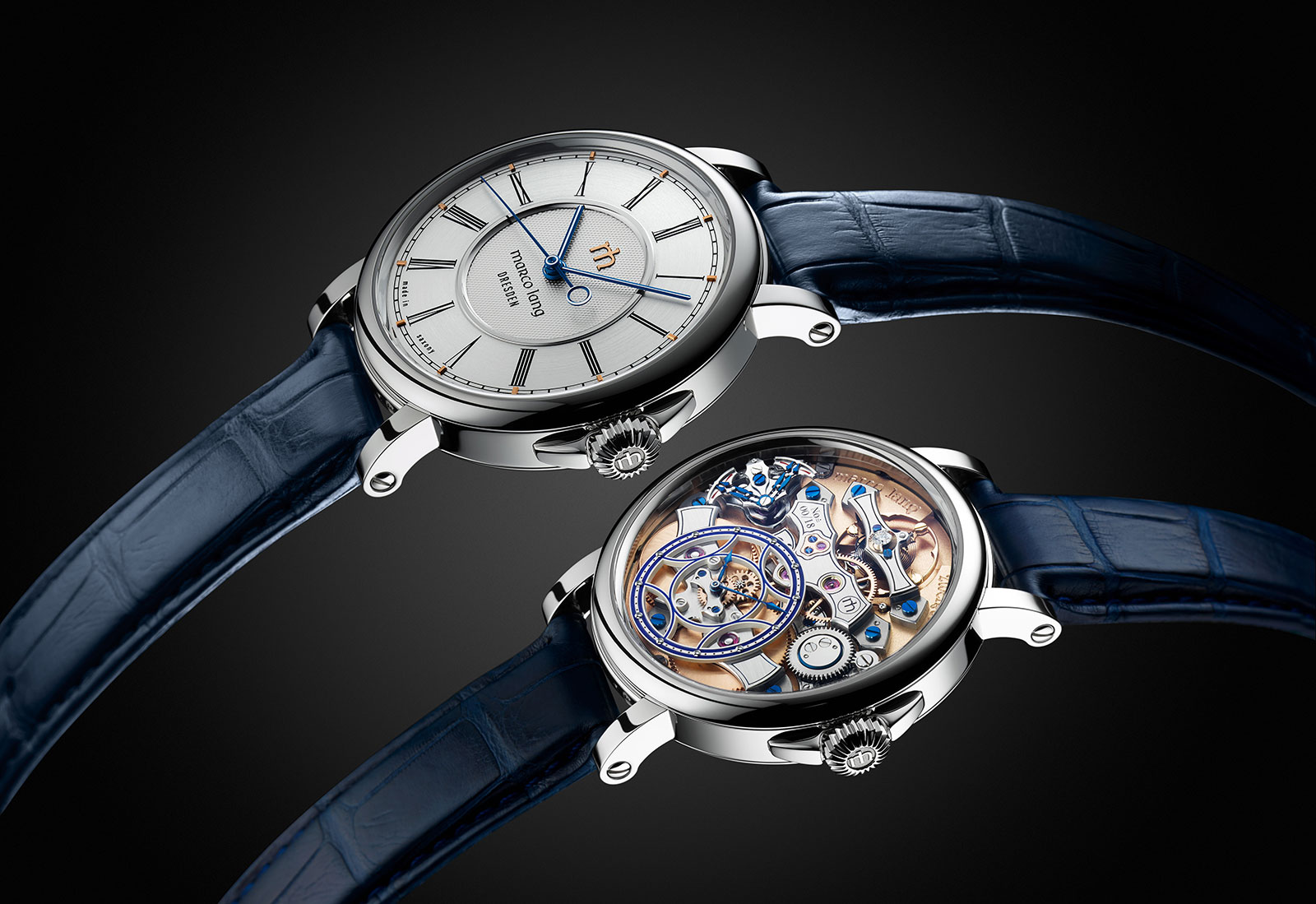
Marco Lang is now an independent watchmaker in the literal sense, having left Lang & Heyne last year. He’s set up a one-man workshop in his hometown of Dresden, and has just announced the first watch of his newly-established eponymous brand – Marco Lang
Mr Lang’s first creation is the Zweigesicht-1, a highly-finished, time-only wristwatch with a few novel twists. Zwei gesicht is a literal description of the watch, translating as “two face” – the watch has the time display on both sides, with easily removable lugs that allow it to be worn on either side.
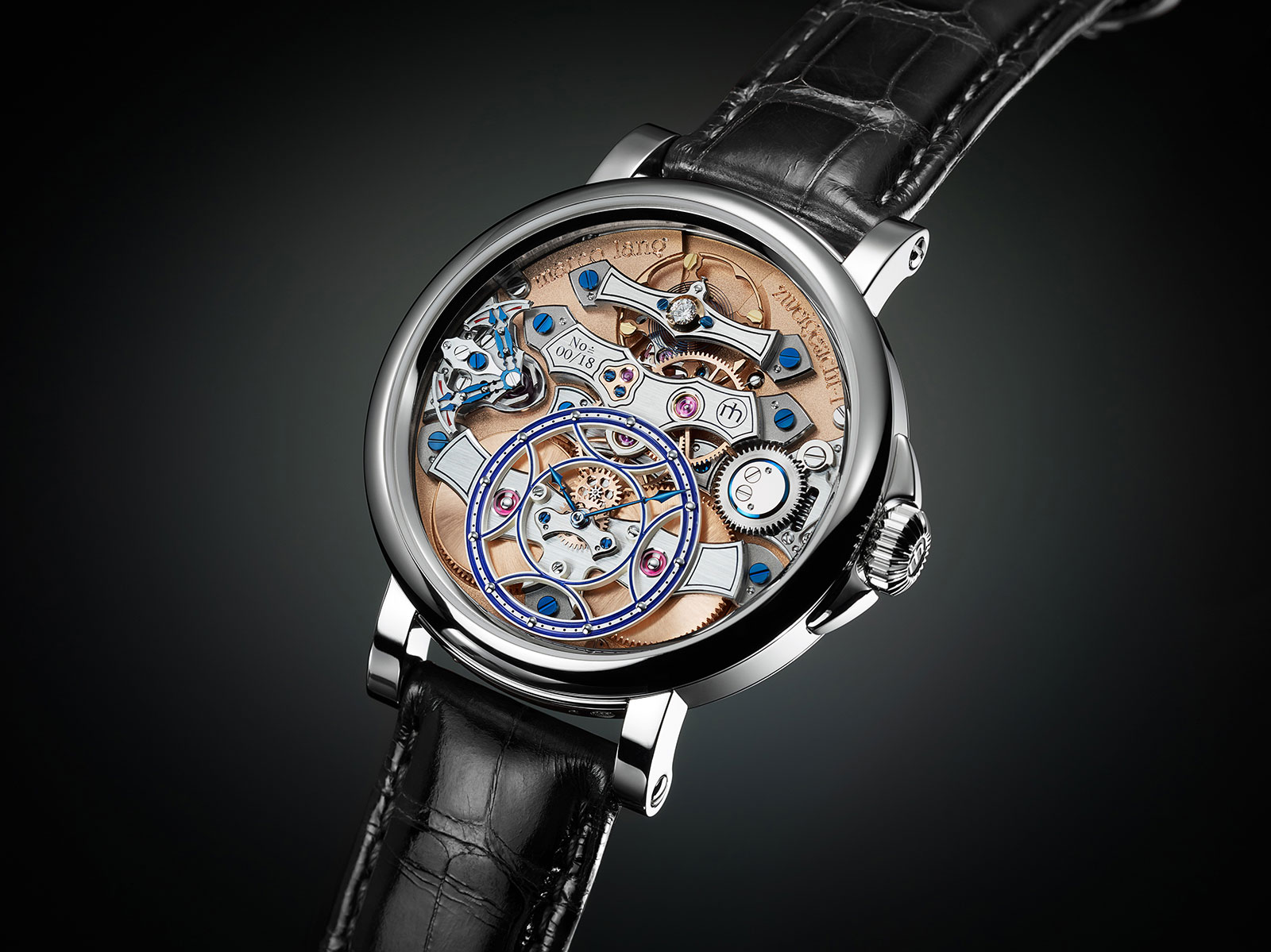
The Zweigesicht-1 worn movement side up
Initial thoughts
As a watchmaker known for a devotion to old-school quality, Mr Lang’s second act promised to be noteworthy. The Zweigesicht-1 appears to live up to expectations, being a simple watch executed in an elaborate manner and finished by hand to a high standard.
Harsh sounding to non-German speakers, the Zweigesicht-1 is ironically intricately constructed and finished. But unlike his earlier work that was modelled on pocket watch movements, the Caliber ml-01 looks modern and original, while still incorporating finely-shaped components as well as gears made of solid, 14k gold.
The contrast of the steel bridges against the rose gold-plated base plate is jarring – especially with the aggressively pointed bridges with border outlines – but there’s not mistaking the quality, even in images, because Mr Lang knows what he’s doing.
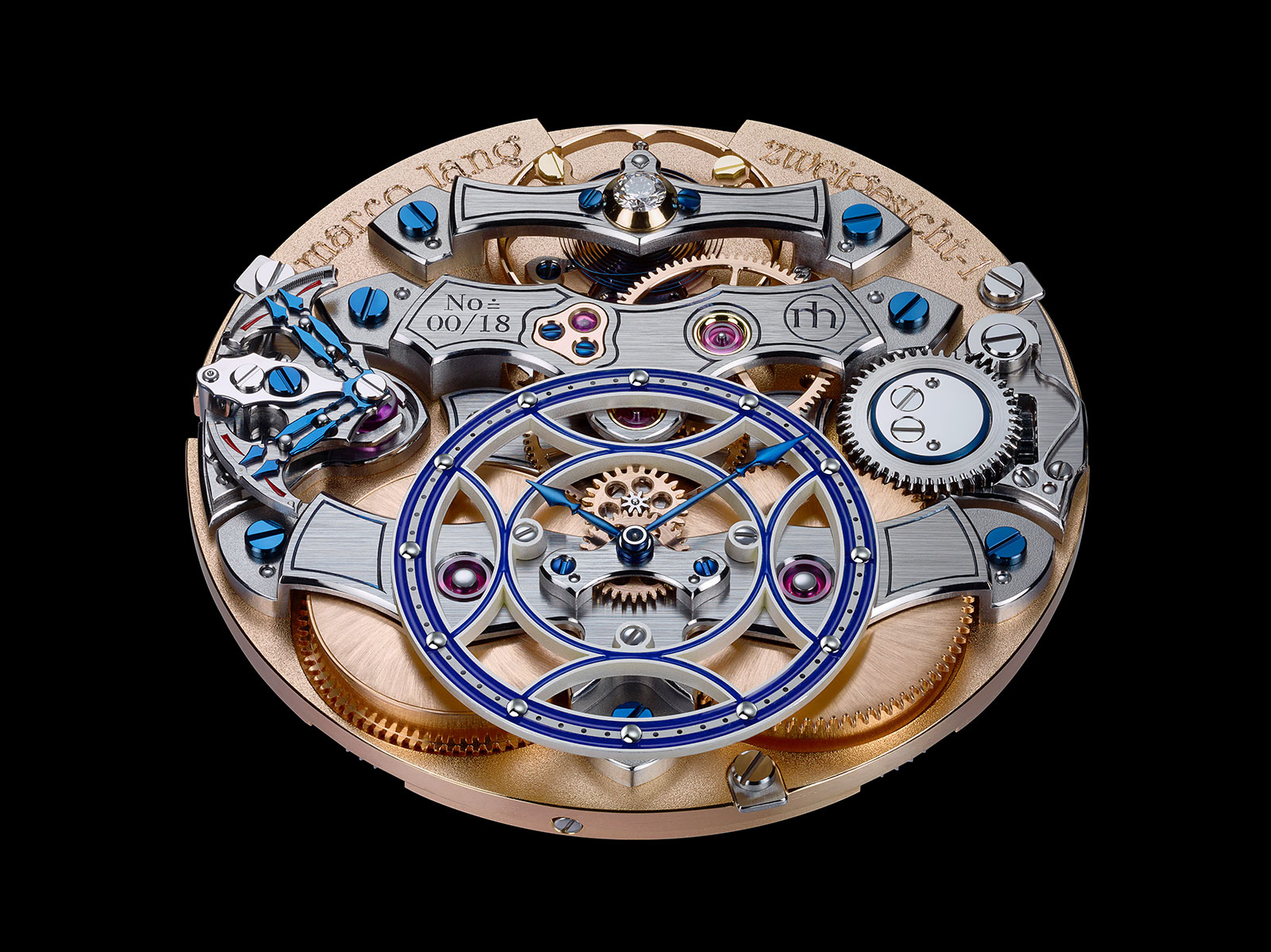
The chapter ring for the time display on the movement side is solid silver and filled with translucent blue vitreous enamel
Though the case and dial design are clearly reminiscent of his later work at Lang & Heyne – an inevitability given the authorship – the style has been modernised. The dial especially is cleaner and more modern, avoid the weight, pocket-watch aesthetic that was a defining trait of Lang & Heyne design, but also a shortcoming, depending on your taste.
Beyond the updated styling and impressive new calibre, the Zweigesicht-1 is equipped with removable lugs that allow it to be worn on either side. Removing and reattaching the lugs is a straightforward affair, but nonetheless requires a deft hand due to the size of the captive screws that release the lugs. While the concept is a good idea in theory – and something a a skilled watchmaker like Mr Lang can do with his eyes closed – buyers of the watch might find it fiddly.
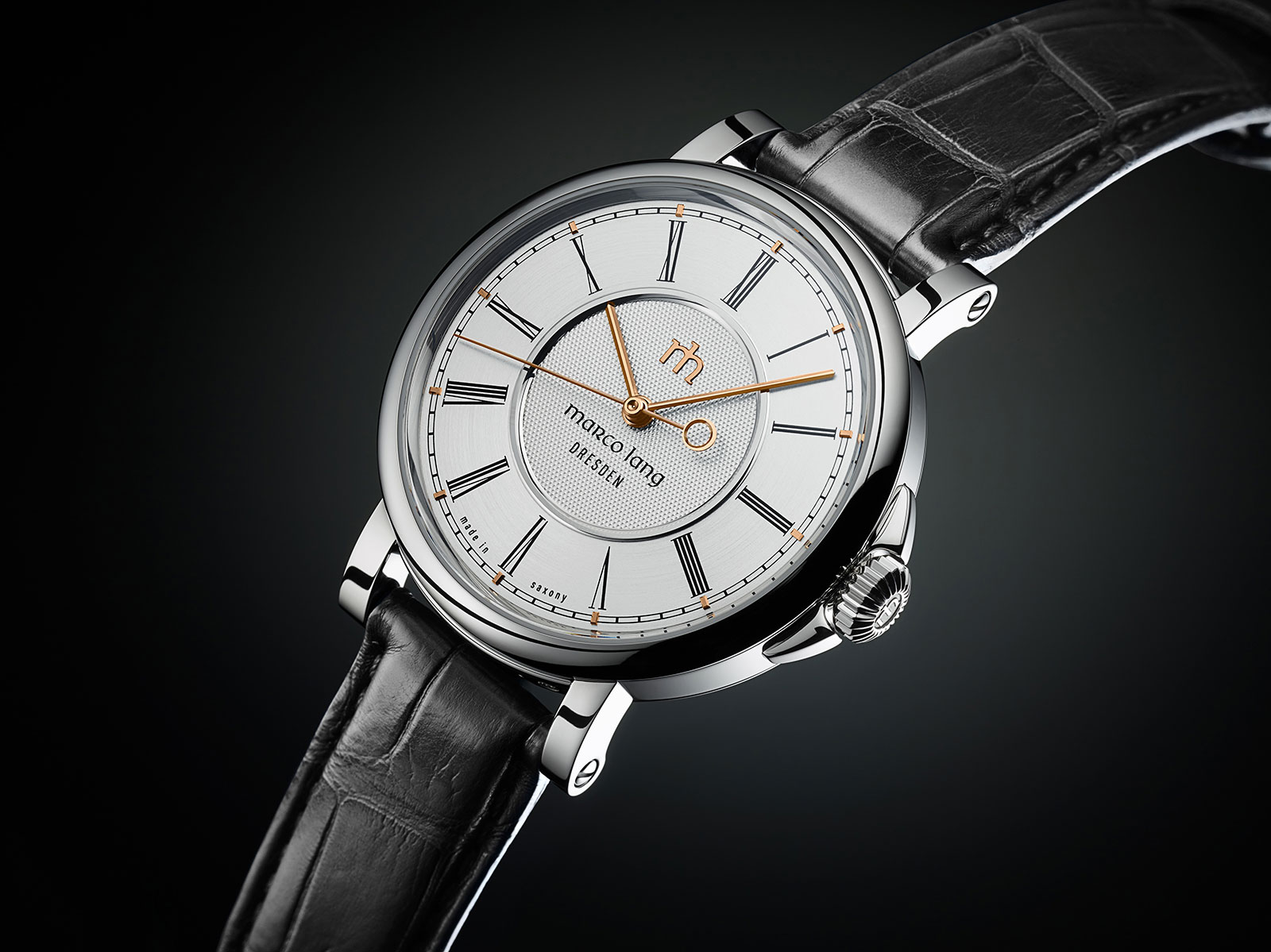
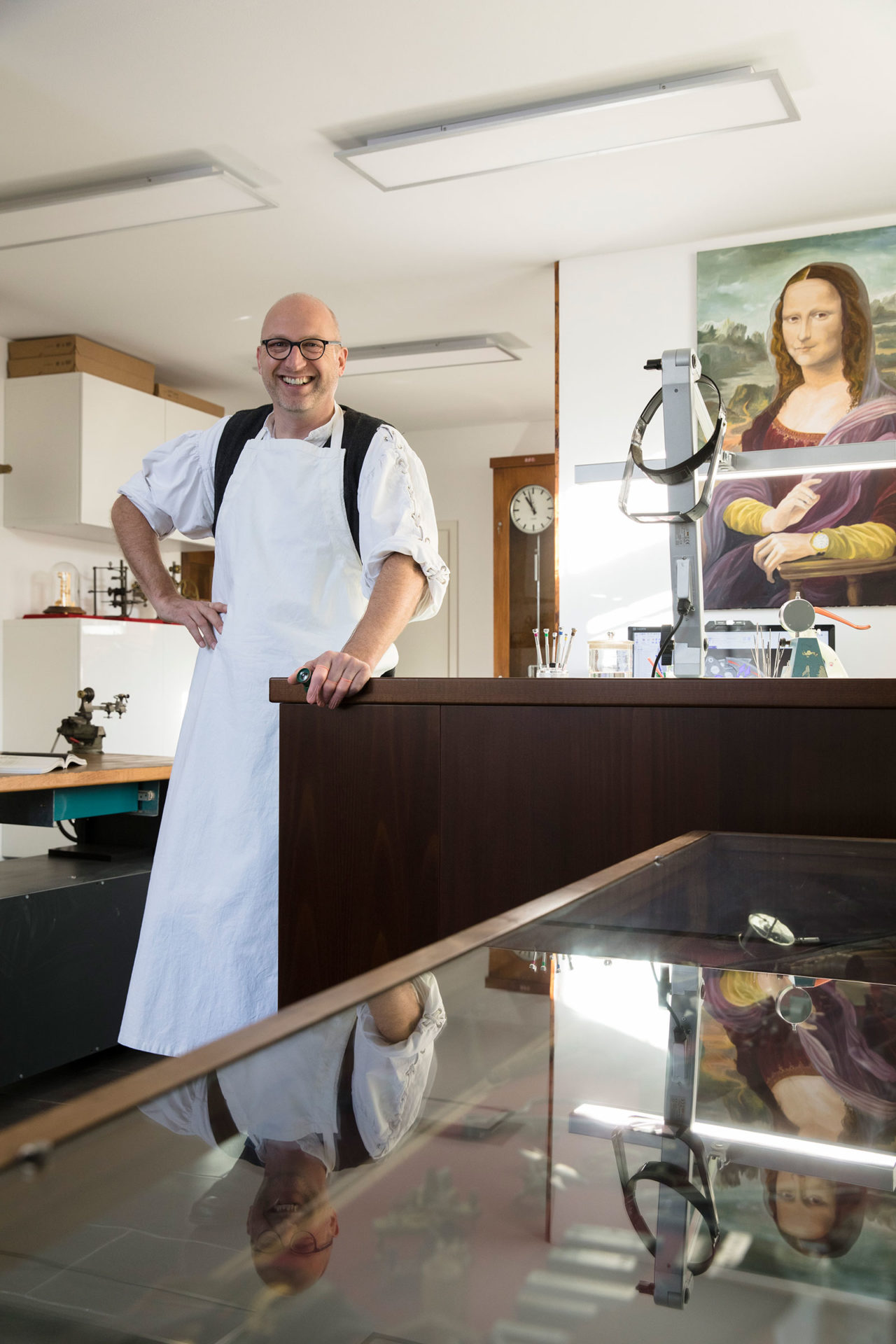
Marco Lang
Teutonic looks
The Zweigesicht-1 has a simple dial on the front that’s made up of three parts, with a recessed centre finished with clous de Paris, or hobnail, guilloche.
Both the Marco Lang logo and five-minute markers are applied, while the hands are either solid rose gold or blued steel, depending on the case metal. Though simple in shape – they are essentially batons with gently pointed tips – the hands are solidly constructed but delicately finished – subtly facetted lengthwise and polished by hand.
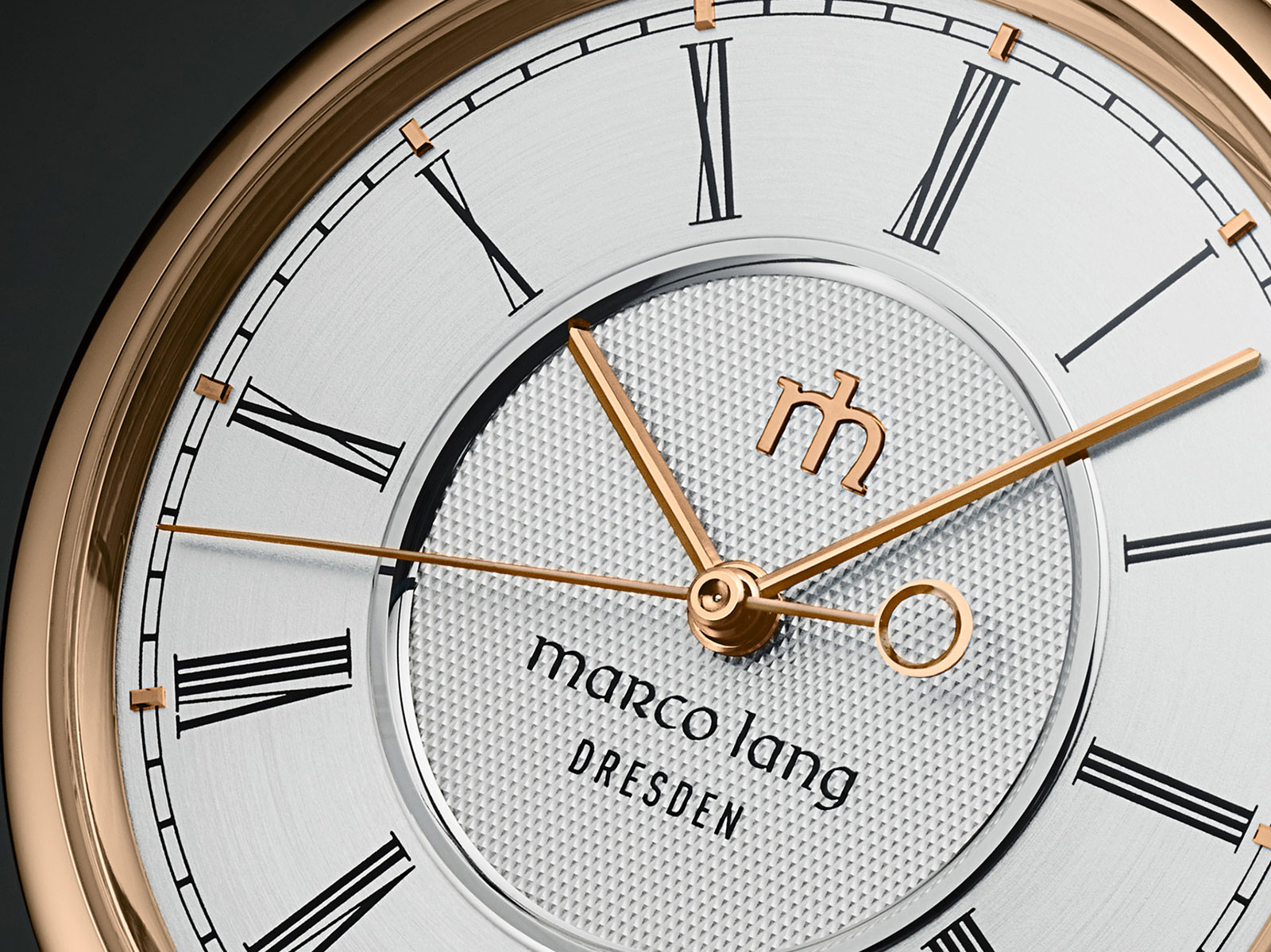
The dial on the reverse is far more intricate. All of the movement is reveal, with the bridges arranged vertically and symmetrically and the time on a sub-dial at six o’clock. Made of silver and filled with translucent blue grand feu enamel, the chapter ring for the time is matched with blued-steel cathedral style hands.
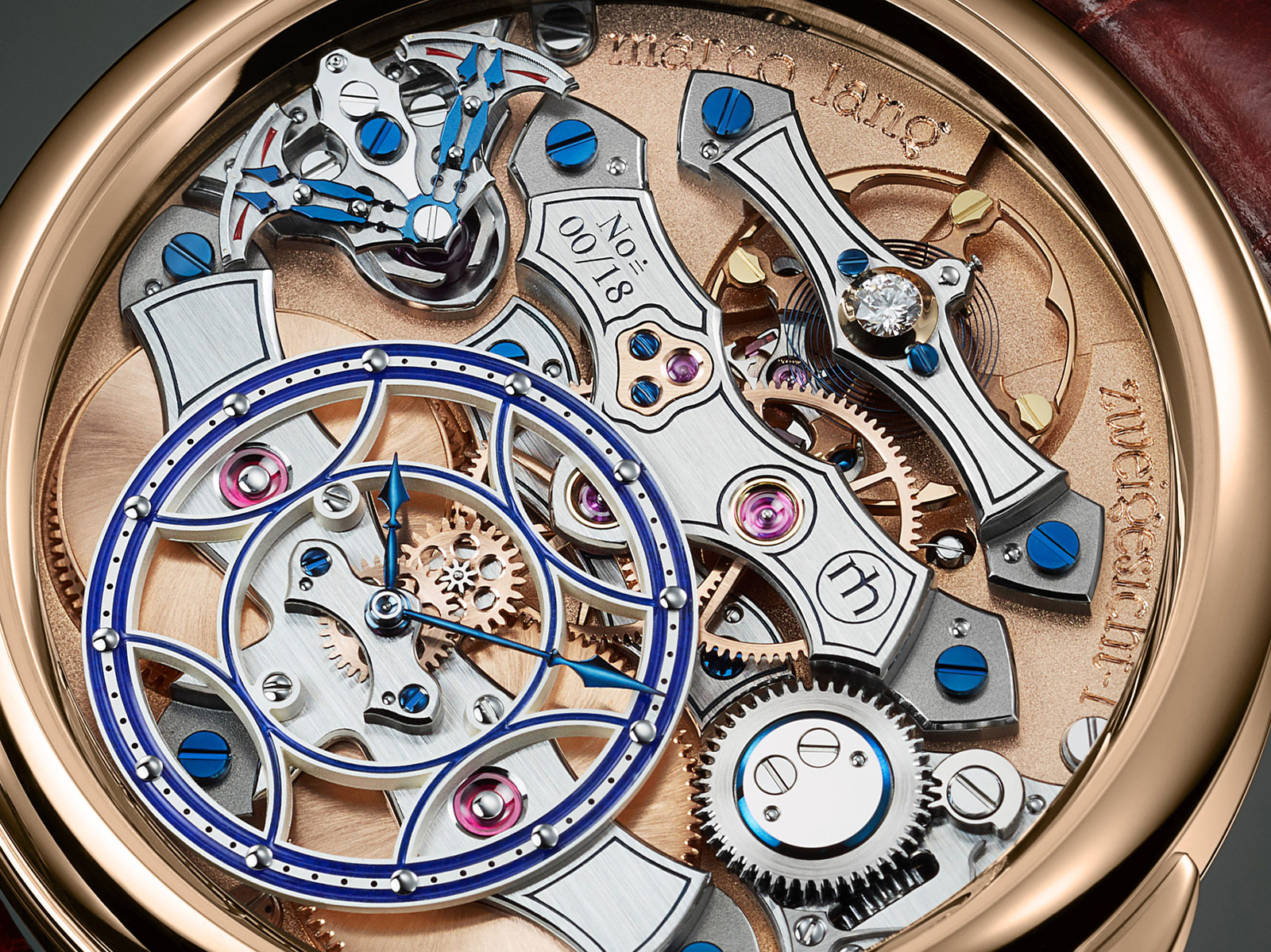
Movement features
The distinctive look of the movement is a result of its architecture that logically flows upwards. Both the barrels sit under the time display, anchored by a large bridge. The bridge that spans the centre of the movement holds the wheels of the gear train, with the crown wheel for winding the barrels – and a delicately-shaped click spring – positioned just beside the crown.
And at 12 o’clock sits the balance bridge, with the four-armed, adjustable mass balance wheel just below, attached to a Breguet overcoil hairspring. And in a nod to traditional watchmaking, the end stone for the balance staff is a diamond, as was often found in top-of-the-line German pocket watches of the 19th century.
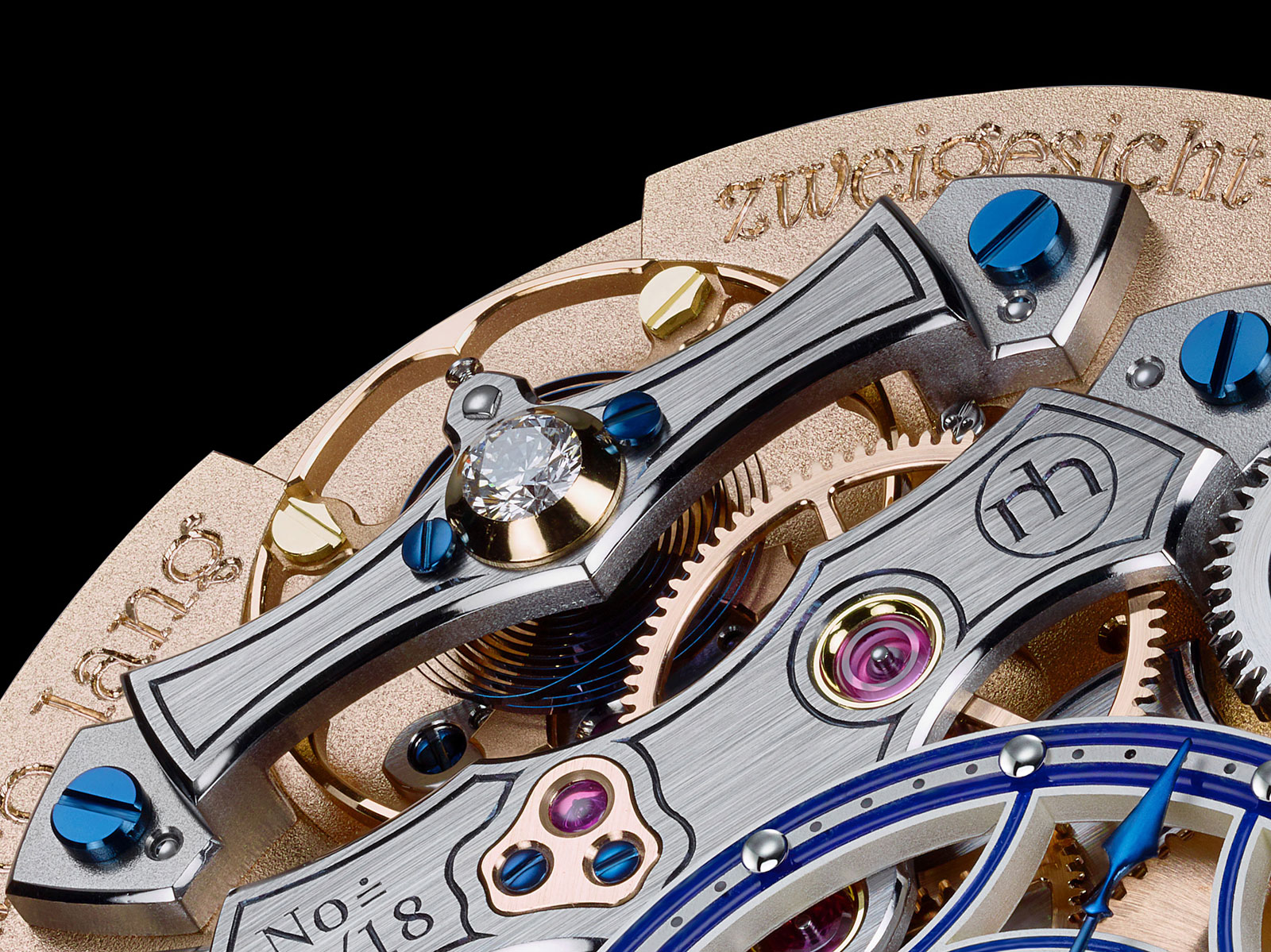
The balance bridge with its diamond end stone
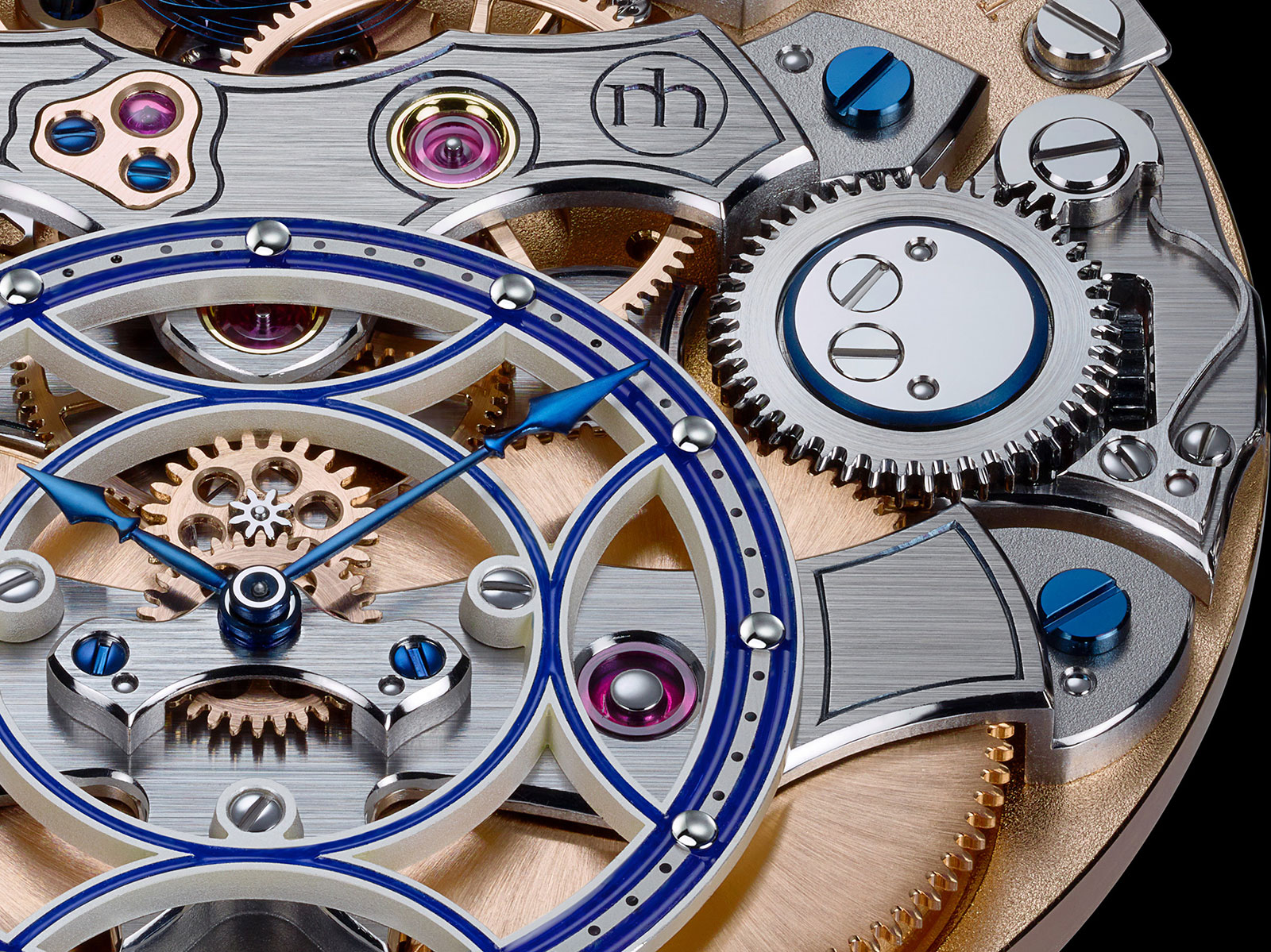
The crown wheel (extreme right), with one of the barrels just below
Though traditional in many aspects, the movement does incorporate a new complication: a shock recorder. Located at nine o’clock, the records and indicates the most recent shocks – one in each direction for a total of four – experienced by the movement.
Built with extraordinarily fine steel components, the shock recorder relies on a cylindrical weight that’s displaced when the movement is subject to shock.
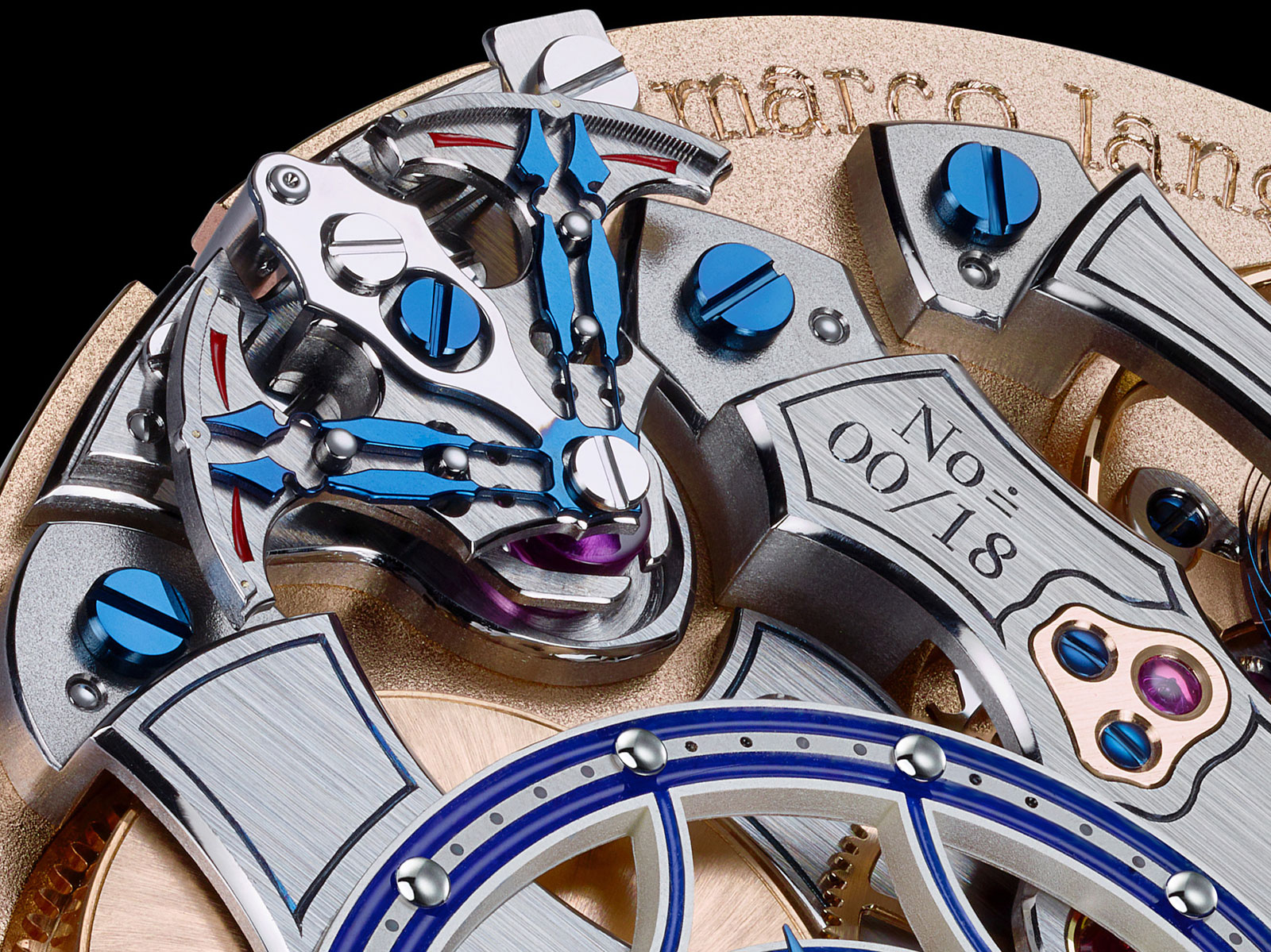
The pointers that indicate the impact on each axis and direction
The motion of the weight shifts either one or both of two steel forks, which in turn move the four blued steel hands along the scale, indicating the magnitude of the shock as well as the direction (either positive or negative on the X or Y axes).
The hands move in a unidirectional manner on the scale, and are held in place by fine locking teeth on the scale. A maximum of four impacts can be recorded – one in each direction on each axis. And a recessed pusher on the case band resets the hands to zero simultaneously, allowing for a new measurement.
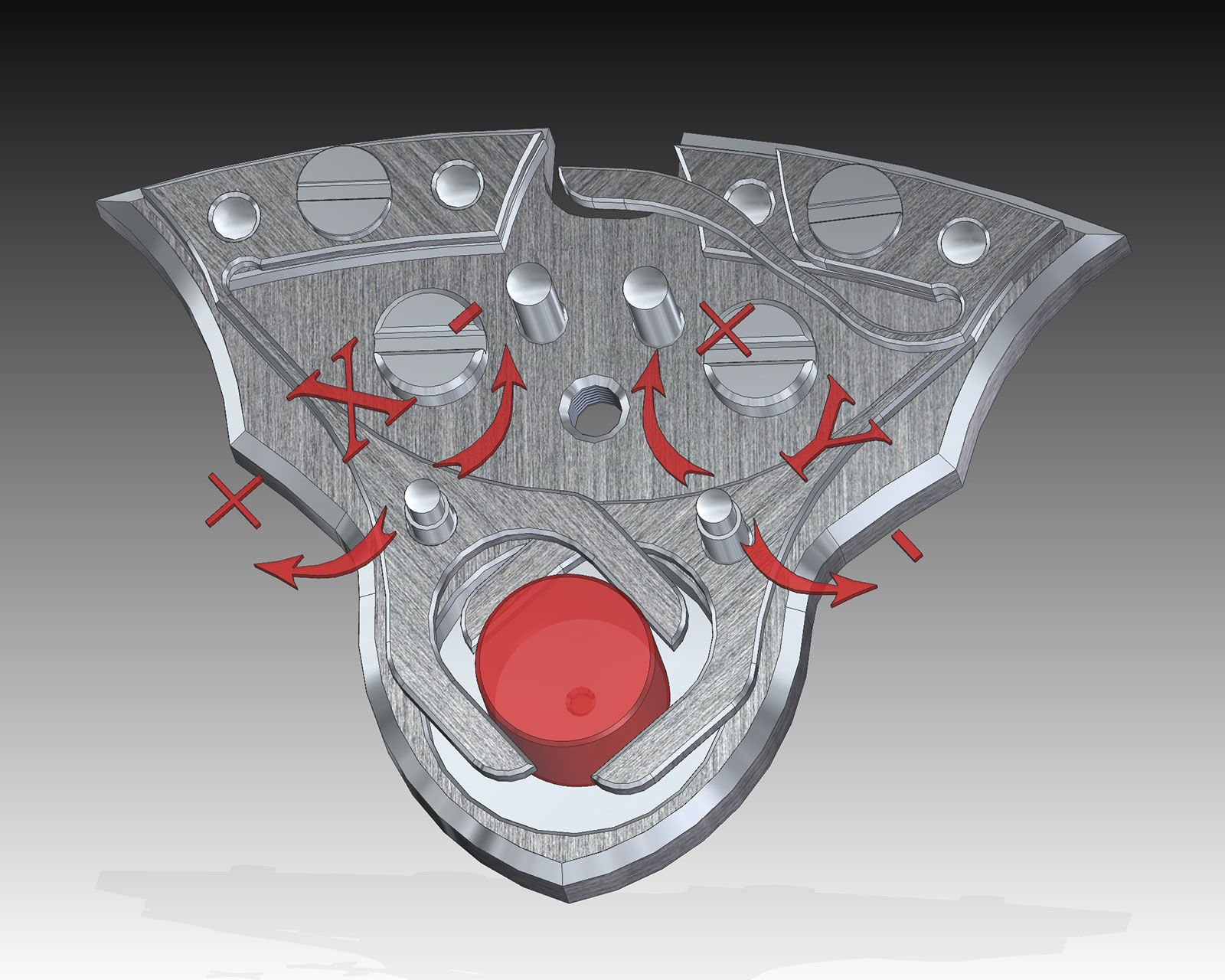
The cylindrical weight (in red) with the two forks that drive the hands
The calibration of the shock indicator is still a work in progress according to Mr Lang, who is currently wearing the prototype of the Zweigesicht-1 and refining the indicator. He is working to strike a balance between having a sensible threshold for minimum impact such that the indicators can be observed to move, while also not recording the most minimal of forces.
Importantly, the Zweigesicht-1 can be ordered without the shock recorder, which is interesting and surprisingly complicated, but not a must-have. In its place will be a plate with an engraving as well as savings of an appealing €6,000.
Removable lugs
While the movement is the technical and artisanal highlight of the watch, its double-faced nature is novel. According to Mr Lang, perfecting the reversibility of the case was one of the crucial steps in the development of the Zweigesicht-1.
“It was important to me during the construction that you shouldn’t see that the watch can be rotated, so the crown should stay in the same place, and the case should not become more massive or mechanically more vulnerable,” explains Mr Lang, “[At the same time] the wearing comfort remains the same on both sides thanks to the symmetrical construction.”
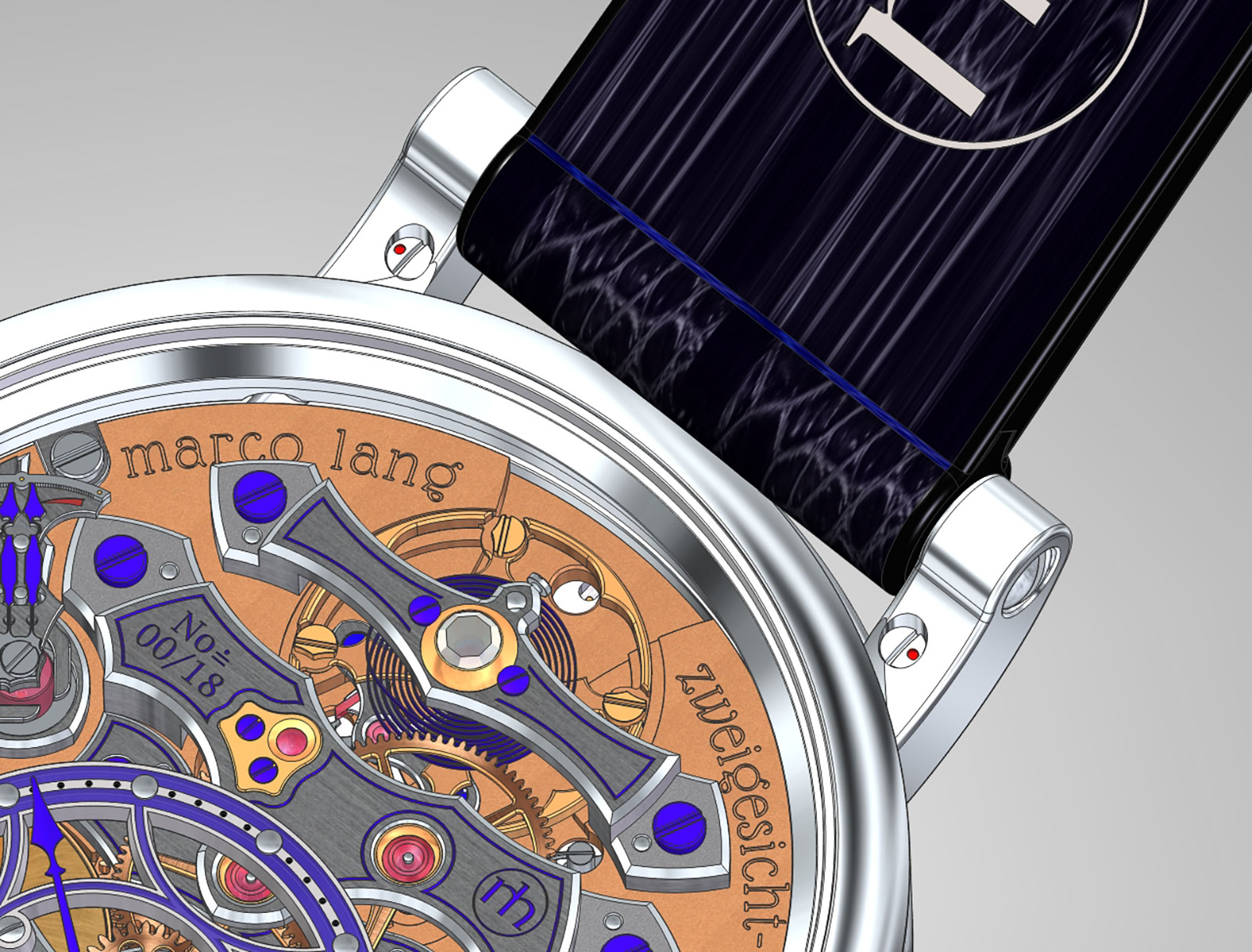
Both sides of the case middle are identical, meaning that the case back and bezel are mirror images of each other. And the lugs are essentially U-shaped frames that attach to each side of the case middle via fixed posts.
Reversing the watch is a simple affair: each lugs has a captive screw on its underside with a red dot on one half of the screw head. Rotating the head such that the red dot points to the outer side of the lug releases the lugs from the case middle. Both lugs are then reattached in the other direction, and secured by rotating the fixed screw back to its locked position.
The Zweigesicht-1 is delivered with a small screwdriver and loupe for performing the reversing of the lugs.
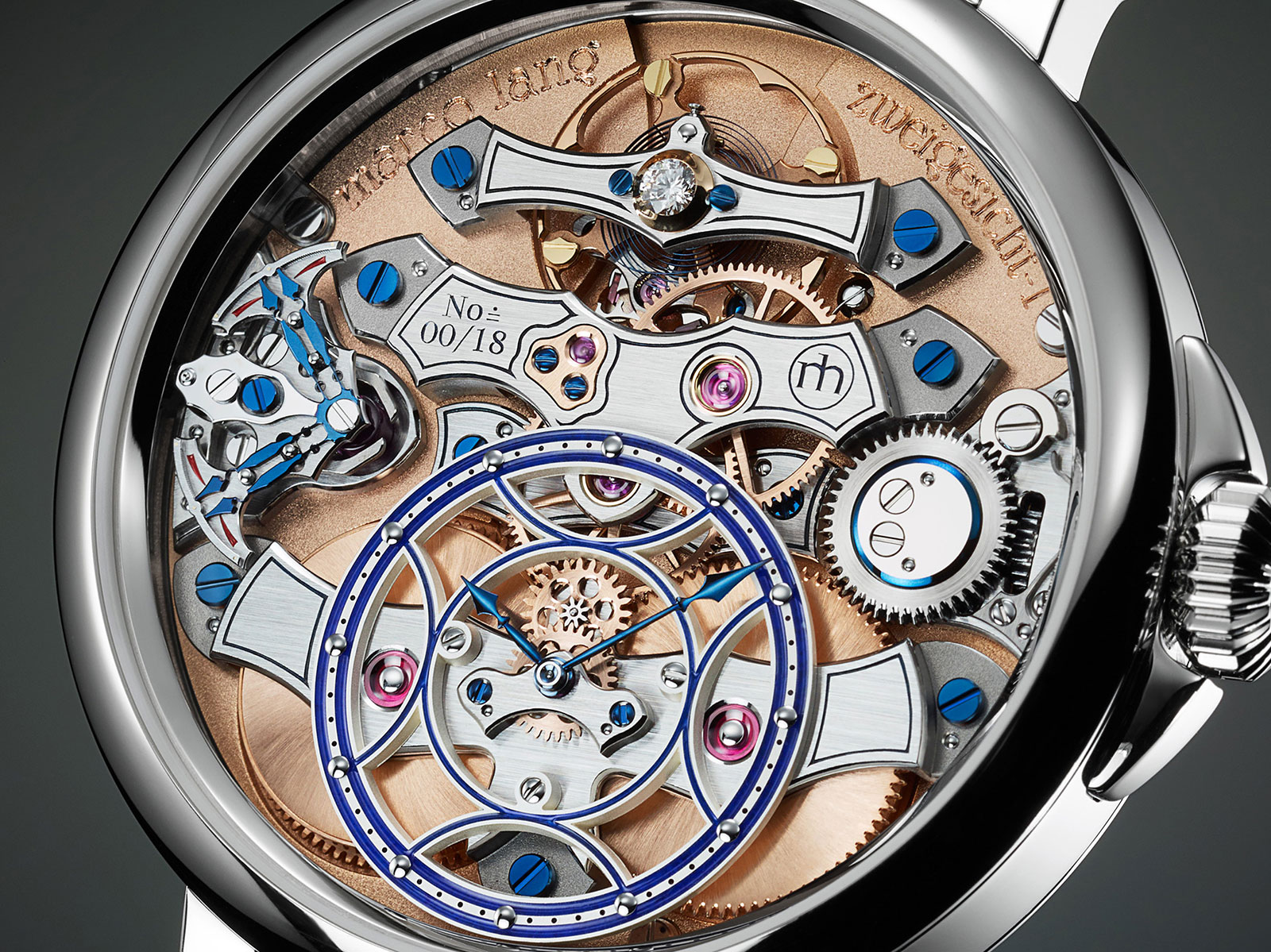
Key Facts and Price
Marco Lang Zweigesicht-1
Diameter: 40 mm
Height: 9.5 mm (without sapphire crystal)
Material: Steel, 18k rose gold, or platinum
Crystal: Sapphire
Water resistance: 50 m
Movement: Caliber ml-01
Features: Hours, minutes, seconds, shock indicator, and double-faced time indication
Frequency: 21,600 beats per hour (3 Hz)
Winding: Hand wind
Power reserve: 70 hours
Strap: Alligator with shark lining
Limited edition: 18 watches
Availability: Direct from Marco Lang, with production of only four to five watches a year
Price:
With shock indicator – steel €57,000; rose gold €65,000; and platinum €68,000
Without shock indicator – steel €51,500; rose gold €59,500; and platinum €62,500
Prices exclude taxes
For more, visit Marcolangwatches.com.
Back to top.


